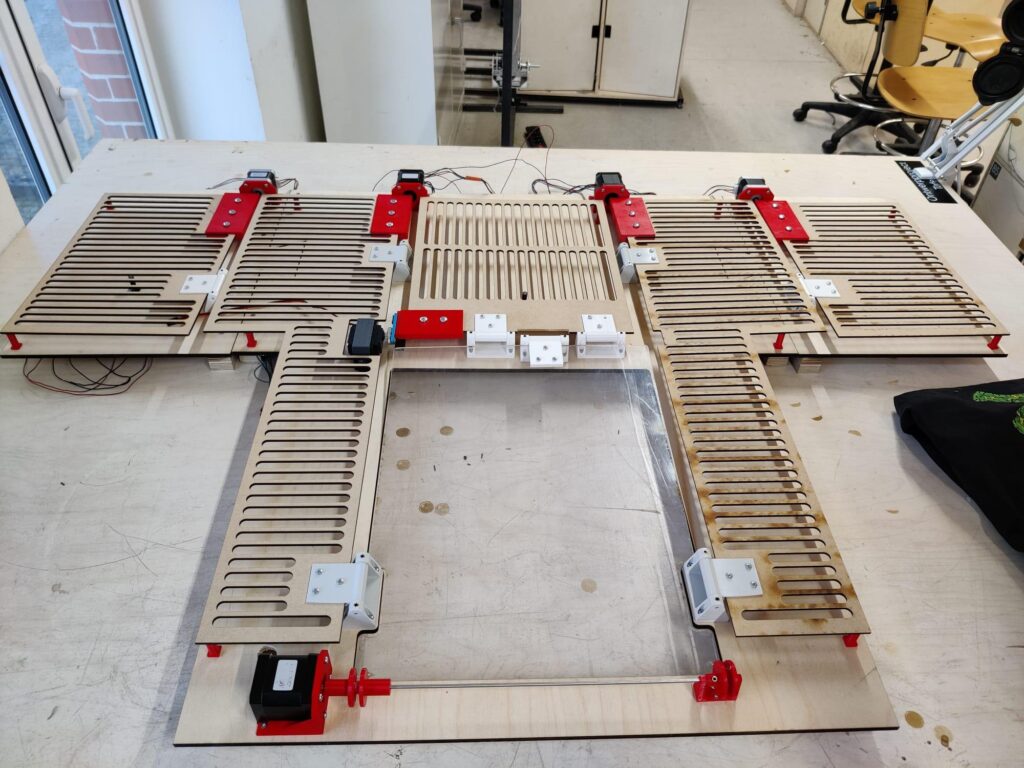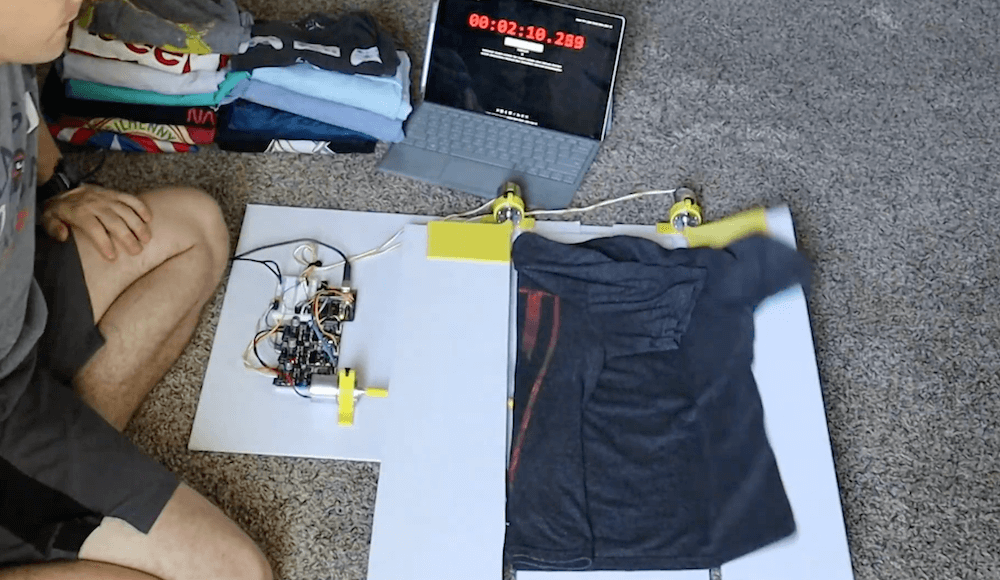03

Folding t-shirts isn’t a fun process for many people, and even worse, it’s difficult to get them looking the exact same way when the pile of folded clothing is completed. So in order to make it easier, mechanical engineering students Pietro Oppici, Corentin Vandebroek, Stefano Pontoglio, and Quentin Bertieaux set out to build a robot of their own that could quickly and precisely fold shirts to perfection and drop them below. They also wanted it to be able to detect what kind of tee was present so the robot could adjust its folding style to match.
After designing and fabricating a mechanism consisting of birch and MDF wooden panels held together with 3D-printed hinges, the team opted to use an Arduino Uno board as the brains of the operation. From there, they attached a series of NEMA17 stepper motors, three of which were high torque for fast folding, and a servo motor for the final fold. A set of five DRV8825 drivers were then connected to the Uno, which delivered current from the 12V power supply to the motors.
The program for the t-shirt folding robot starts off by taking readings from two photoresistors in order to detect if a shirt is present and if it has long or short sleeves. For long sleeves, the outer panels fold first, and then the rest of the movements follow from there. At the very end, a trapdoor opens at the bottom so the now-folded shirt can slide onto a neat pile of clothing below.
To see this project in action, you can watch the students’ video below and read more about it here on Instructables.
The post Neatly fold your t-shirts with an Arduino-powered robot appeared first on Arduino Blog.



